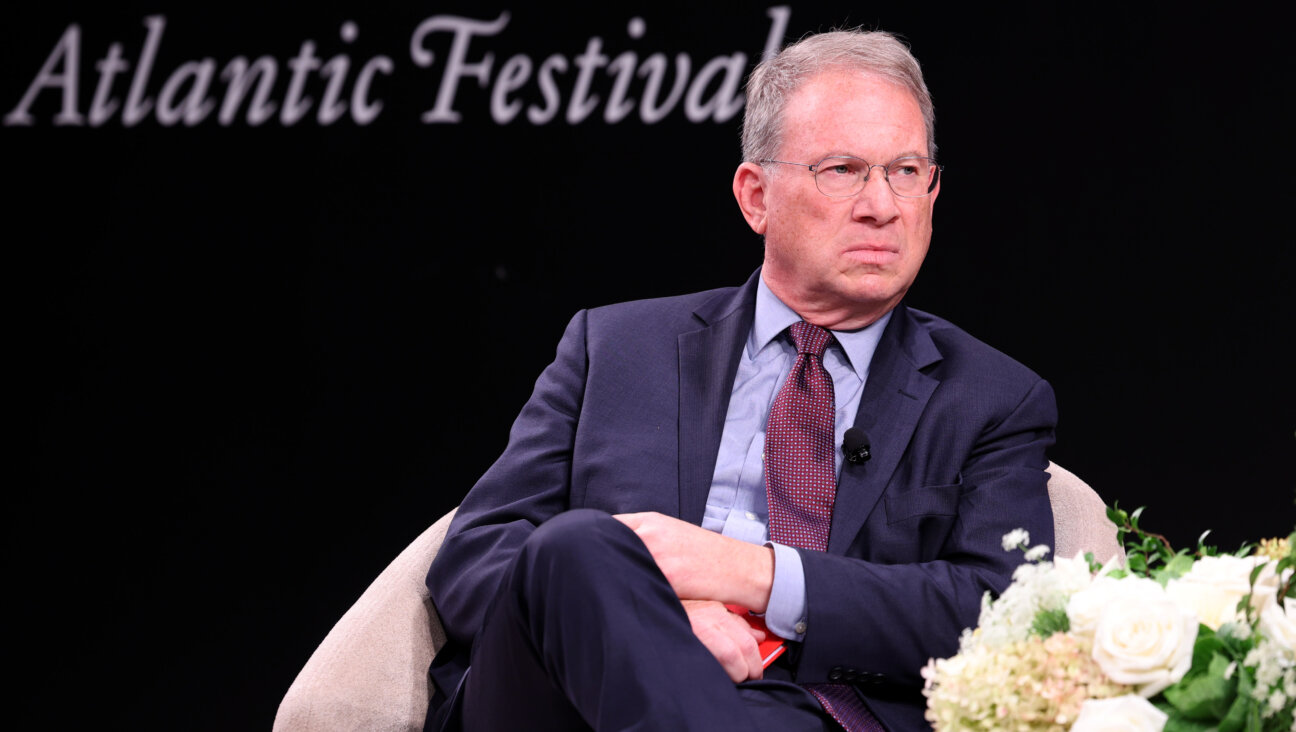From Ethnic Ripples, a Tidal Wave
The first boatload of Jews may have landed on these shores in 1654, but it was not until almost 300 years later that Jews made a decisive impact on American literature. The Sephardic Jews who came first and the German Jews who followed in the 1840s became merchants and artisans — and, eventually, great patrons of culture. The contentious Eastern European immigrants who began arriving in the 1880s produced not only socialists and trade unionists but voluble writers and intellectuals, including the longtime Forward editor Abraham Cahan, who, as a novelist in English, belonged to the new wave of social realists, and Mary Antin, who published an acclaimed memoir, “The Promised Land,” in 1912. Apart from such writers, the creative ferment among Jews from Eastern Europe, especially in poetry and drama, was almost entirely in Yiddish. Soon New York rivaled Warsaw, Odessa and Berlin as a center of Jewish culture, but only within the immigrant community, not in American letters at large. There was as yet no Isaac Babel, no Kafka, no Proust to shake the foundations of American writing. Meanwhile the best writers, including Cather, Wharton, Hemingway and Fitzgerald, slipped into demeaning caricatures of pushy, successful, but fundamentally alien Jews.
In contrast with the situation in literature, Jews had already begun to dominate the vaudeville stage, the comedy scene, Tin Pan Alley, the musical theater and the fledgling motion picture business. Literature comes hard, for it demands both a mastery of words and an intimate knowledge of social code. Comedy and music speak a more universal language. The routines of Borscht Belt humor and the soulful, vaguely oriental keys of Jewish music were quickly adapted to the American stage. Straight actors like Paul Muni migrated to Broadway and Hollywood from the Yiddish stage. Attaching themselves to unlikely material like blackface and jazz, prodigiously gifted Jews revolutionized show business in America. An early Jewish biographer of George Gershwin argued that this fusion was ideal, for only Jews could market black culture for mass American taste. Like other Jews of their time, entertainers like Irving Berlin, Al Jolson, Eddie Cantor and Fanny Brice were climbing out of the ghetto and into the mainstream, in part by toning down their ethnic coloring.
Jewish writers and filmmakers between the wars became even more thoroughly Americanized. It would be as hard to find any Jews in popular works by Dorothy Parker, Edna Ferber, George S. Kaufman, Lillian Hellman and Fanny Hurst as in a typical Hollywood movie, with its idealized Americana dreamed up by immigrant Jews. But there were hints of change. A few young writers, some of them radicals or Communists — including Anzia Yezierska, Ludwig Lewisohn, Michael Gold, Henry Roth, Meyer Levin, Daniel Fuchs and Clifford Odets — began probing the texture of American Jewish life, including problems of family, street life, poverty, class conflict and religious differences. They found a rich trove of material in the gap between immigrant parents and their restless, rebellious American children. Other writers like Nathanael West and his brother-in-law S. J. Perelman, without dealing directly with Jews, brought a distinctive inflection, a surreal comic pathos, to their outlandish stories and sketches. Their work was closer to the Marx brothers than to assimilated Jewish novelists like Hurst and Ferber. (Perelman even wrote some of the Marx brothers’ movies, though he and Groucho could never get along.)
In the decades immediately after World War II, these ethnic ripples turned into a tidal wave. In what was still a Christian nation, it finally became possible to be seen as an important American writer while remaining explicitly Jewish. This new course worked as well for bestselling authors like Leon Uris and Herman Wouk, who cast Jews in a heroic mold, as for literary novelists such as Saul Bellow, Bernard Malamud and Philip Roth, who saw them as symbolic victims and exemplary sufferers. In both cases the Jew became the new Everyman, a figure of identification for all readers, not simply for other Jews. The war and the Holocaust, along with the growing influence of Sigmund Freud, had opened America’s eyes to what Joseph Conrad called the “heart of darkness,” the human potential for evil — a tragic knowledge that surfaces only occasionally in earlier American literature. In the war’s aftermath, Jews came center stage not only for their horrendous fate in Europe and near-miraculous resurrection in Israel but for their achievements in America, where barriers of prejudice and discrimination were falling down. Materially, culturally, American Jews were entering a golden age, thanks in part to pangs of guilt and shame over the incineration of Jewish lives abroad.
As America and its second-generation Jews marched hand-in-hand into the postwar boom, Jewish writers and critics kept telling them that all was not well. Though Jews prospered and gained acceptance, as David Levinsky had done in Cahan’s 1917 novel, somehow their lives did not seem altogether happy. Instead, like so many other Americans, they had traded the worry about their daily bread for the subtler malaise of unhappy marriage, sexual disappointment, unsatisfying work, psychological confusion and a sense of spiritual vacancy. Signing on to the middle class, they also signed on for the neuroses of the middle-class life, the emotional luxuries that came with success. For many Jews, the world of their fathers, the tradition-bound lives of the shtetl and the ghetto, began to look more attractive, more authentic, than when they were straining to leave it behind.
The first generation of New York intellectuals had traded in their Jewishness for literature or radical politics. Ideas and arguments became their currency of exchange, words their medium for attaining social mobility or sowing political upheaval. But following the war, Alfred Kazin wrote lyrically about growing up in Brownsville and Irving Howe anthologized the riches of Yiddish literature, including the modernist fiction of I. B. Singer, who would become the most prolific and colorful writer on the American Jewish scene. When his signature story “Gimpel the Fool” appeared in Partisan Review in 1953, when Singer began appearing regularly in The New Yorker (edited by a thoroughly assimilated Jew, William Shawn), and later won the Nobel Prize, it seemed as though a whole buried world, restless with ghosts, had been resurrected in his pages.
The alienated creatures so warmly imagined by Jewish writers, from Bellow’s “Dangling Man” and “Seize the Day” or Arthur Miller’s “Death of Salesman” to Malamud’s “The Assistant” and “The Magic Barrel” or Allen Ginsberg’s “Howl,” belonged to the heritage of modernism, but suddenly they spoke to something deep in American life as well, a hollowness at the heart of postwar abundance and the heady new sense of world power. With “Herzog” and “Mr. Sammler’s Planet,” Bellow brought this unease — heightened by the anguish of his protagonists’ self-scrutiny — into the center of American literature. Why did Jewish writers, including marginally identified Jews like Norman Mailer and J. D. Salinger, become the bearers of this comfortless message, which began to speak to all serious American readers?
The answer to this question lies not only in the twists and turns of midcentury American life but in the Jewish attraction to literature as a vehicle for understanding their own lives, their tumultuous past, and their ever-vulnerable position in society, which clashed with the feeling of election woven into Jewish tradition. Chosen? Chosen for suffering, perhaps. While there were many kinds of literature before modern times — that is, before the enlightenment and emancipation that began in the eighteenth century — the concept of literature is itself largely a modern invention, a creation of secular society. Whatever the Bible was to our ancestors, whatever Homer and Aeschylus were to the Greeks, whatever Chaucer or Shakespeare meant to their contemporaries, they were certainly not literature in the modern sense, though they have been transformed into literature today.
As everyone knows, the Hebrew Bible embraced an extraordinary range of writings: national legends, historical chronicles, prophetic imprecations, devotional poetry, wisdom literature and legal codes. To its believing readers and commentators, it constituted the divine word. But as faith ebbed and the sacred status of holy writ was eroded, the Bible came to be admired as literature: The Psalms became a keystone of poetic introspection, the Prophets and the Book of Job, with their soaring imagery, became a template for the Romantic sublime, and the Torah itself gained critical appreciation as a masterpiece of narrative, a compactly written fable of creation and national origins.
For almost 2,000 years the Torah was not literature; along with the synagogue, the study house, the Talmud and the memory of Zion, it was the glue that held the Jews together in their dispersion. It took the place of the Temple, the priesthood, and the land itself. It served as the centerpiece of the synagogue service and the ultimate source of a code of law and observance that evolved through endless debate and commentary. It was “Our Homeland, the Text,” as George Steiner called it, a fluid and mobile patrimony, and this helps account for astonishing levels of Jewish literacy even in the poorest shtetls and ghettos.
As Jews began emerging into the modern world, some of this passion for the word flowed into literature — in Yiddish and Hebrew, fed by oral traditions and biblical language, but also in the idiom of nations where Jews remained uneasy guests, tolerated but unloved, free but deeply insecure. Just as careers in law and medicine, the dream of so many Jewish mothers, were not simply professional opportunities but a way of confronting life’s uncertainties and exerting some control, literature became a vehicle for Jews to face up to their insecurity, their often precarious or marginal status — to explore the confusions of identity that resulted from moving from one world into another. Kafka, the Homer of Jewish insecurity, warned his fiancée Felice Bauer that he was made of literature, caught in its invisible chains and unsuited for ordinary married life. His letters and diaries reveal an almost idolatrous reverence for writing — as a means of self-torment but also a desperate bid for salvation. He feels bound to literature as his forebears were bound to scripture, though it offers him a fate rather than a consolation. The modern sense of dislocation and exile, the feeling of being alone in a hostile world, the hunger for meaning, was something Jews had long experienced; only now was the wider world ready for it, first in Europe after the carnage of the Great War, later in the United States.
Unlike the more parochial writers of the 1920s and 1930s, those who appeared after the war demanded recognition as American writers, not simply as Jews. They had few ties to the organized Jewish community and knew next to nothing about Orthodox religion. But many of them, including Bellow and Malamud, grew up in Yiddish-speaking homes and were steeped in Jewish family feeling, immigrant striving and a severe old-world morality, especially sexual morality. Their conflicts were legion; the sense of guilt came with their mother’s milk. For Jewish entertainers, as for some of the writers, this was the stuff of serious comedy; for Malamud and Roth it was a desperate page out of Freud’s “Civilization and Its Discontents.” At a time when old-line Americans were still writing novels of manners, Jewish writers and critics brought to their work a moral urgency that summoned the spirit of the New England Puritans, of Hawthorne, Melville and Henry James. They quickened a tragic strain within the heart of the American dream.
As Robert Lowell looked back to his Puritan forebears in poems of violent intensity, Jewish poets like Karl Shapiro, Harvey Shapiro and Irving Feldman tapped into a vein of Jewish themes and images. In his two great long poems, “Howl” and “Kaddish,” Allen Ginsberg brilliantly deployed Jewish traditions of prophecy and lamentation. It has often been said that Judaism is less of religion of theology than of habit and practice, a hallowing of everyday life. Unlike Christianity, Judaism was never one of the world-despising faiths. This mundane quality, bolstered by a deep attachment to memory and continuity, oriented Jewish writers to the dailiness of fiction, just as the messianic strain disposed them to utopian thinking. So much of the work of Bellow, Malamud and Roth, of Grace Paley and Tillie Olsen, seems like the very fabric of memory, with its inventories of family life. Was there an outlandish cousin that Bellow ever forgot, a school chum or shiksa beauty that doesn’t haunt Roth’s mind, a conversation with her father that Paley cannot recall, or at least invent? Whether in tribute or complaint, Jewish writers found ways of conserving the past while dreaming beyond it.
And how they could write! Bellow almost never perpetrated a bad sentence or time-worn phrase; the impacted style of Malamud’s stories hits us with the force of parable; the virtuosity of Cynthia Ozick’s prose flows from her immersion in Henry James; the architecture of Roth’s long, sinuous sentences defies gravity, in both senses of the word. Only Southerners, schooled in a rich tradition of oral storytelling, and black writers, brought up on the eloquence of the pulpit and the English Bible, could match them in fluency. It was no wonder that Bellow and Ellison became good friends, or that Jewish critics grew entranced with Faulkner and James Baldwin, and idolized the eruptive French writer Céline, despite his virulent antisemitism. This was where the energy of American fiction lay after the war, in the outsider traditions represented by defeated Southerners, acclimated to tragedy and sin; beleaguered Jews, newly empowered but uncertain about who they were or what they most wanted; and emergent blacks, deploying their eloquence to assert their place within the American story.
The creative energy of Jewish prose, poetry, drama and criticism between 1945 and 1970 could not last forever, though its leading lights had long and productive careers. There was not so much a decline as a gradual passing of the torch. The heritage of the Jewish literary renaissance of the postwar years can be found not only in the vast array of younger Jewish writers today, many of them women, but in Latino writers, Asian-American writers, Indian-American writers, and writers from Russia, Eastern Europe and the former Yugoslavia. All these newcomers were well represented at this year’s Key West Literary Seminar on immigrant literature. Jewish and black writers were the first to give American literature a robust multicultural turn, and they deserve credit for the open weave, the sheer variety, of the literary scene today. With enormous patches of new immigrants, the crazy-quilt of American society has now caught up with them. The midcentury Jewish writers turned their hyphenated identities into a quest for identity, their sense of dislocation into new cultural forms, their conflicts and anxieties, which cut to the heart of American life, into a surprising source of literary strength.
Morris Dickstein is Distinguished Professor of English at the CUNY Graduate Center. His most recent book is “Leopards in the Temple,” a social history of postwar American fiction.
The Forward is free to read, but it isn’t free to produce

I hope you appreciated this article. Before you go, I’d like to ask you to please support the Forward.
At a time when other newsrooms are closing or cutting back, the Forward has removed its paywall and invested additional resources to report on the ground from Israel and around the U.S. on the impact of the war, rising antisemitism and polarized discourse.
Readers like you make it all possible. We’ve started our Passover Fundraising Drive, and we need 1,800 readers like you to step up to support the Forward by April 21. Members of the Forward board are even matching the first 1,000 gifts, up to $70,000.
This is a great time to support independent Jewish journalism, because every dollar goes twice as far.
— Rachel Fishman Feddersen, Publisher and CEO
2X match on all Passover gifts!
Most Popular
- 1

Film & TV What Gal Gadot has said about the Israeli-Palestinian conflict
- 2
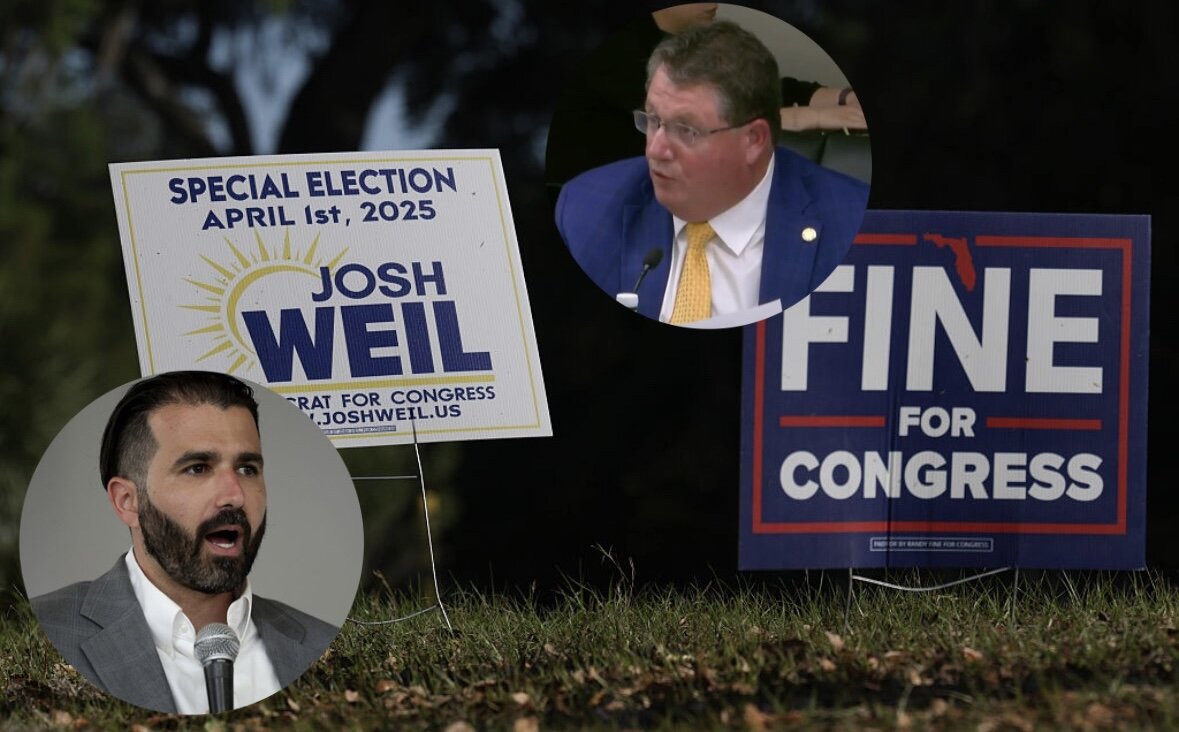
News A Jewish Republican and Muslim Democrat are suddenly in a tight race for a special seat in Congress
- 3
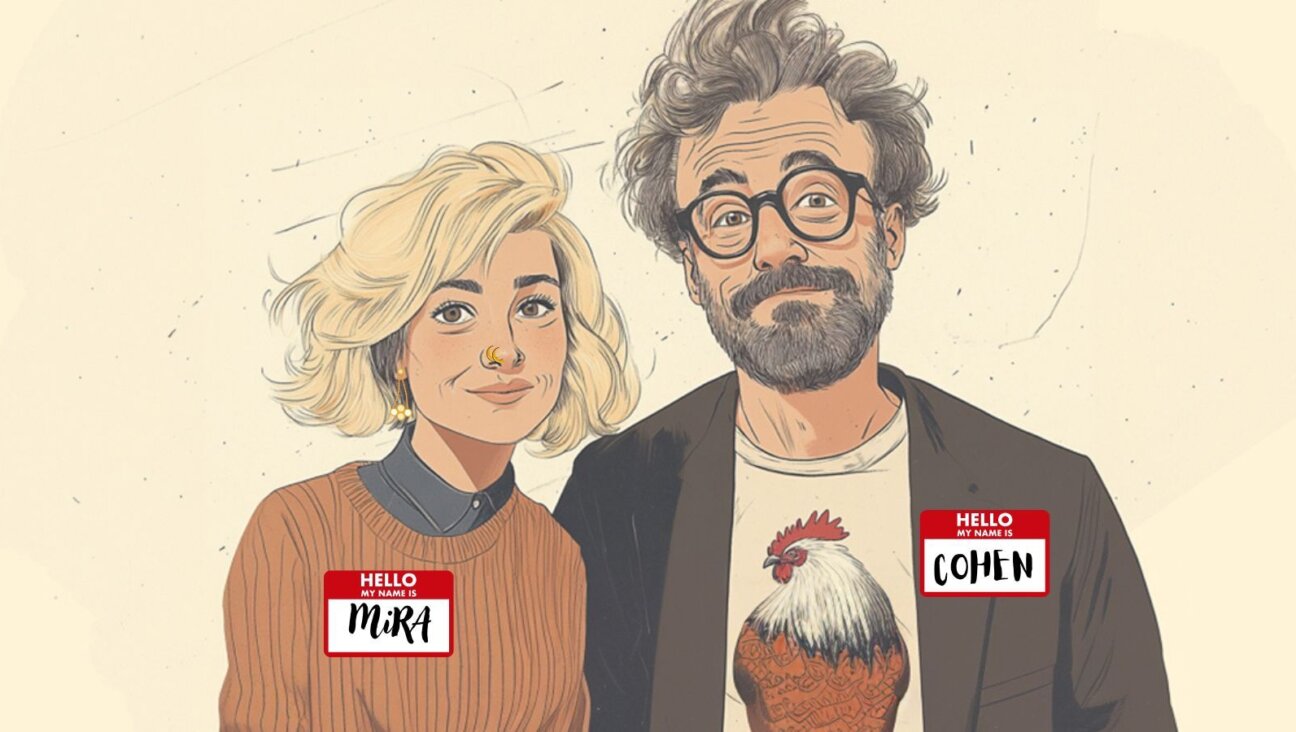
Culture How two Jewish names — Kohen and Mira — are dividing red and blue states
- 4
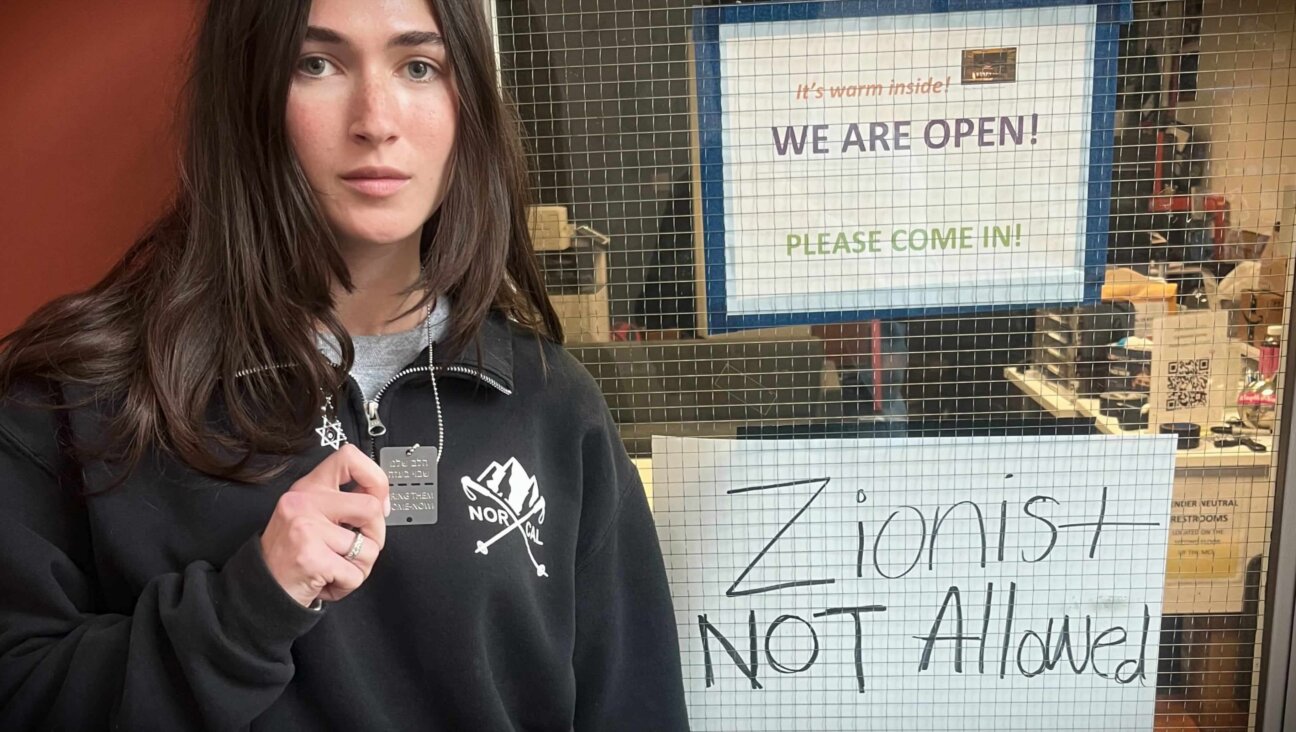
Opinion Is this new documentary giving voice to American Jewish anguish — or simply stoking fear?
In Case You Missed It
-

Yiddish אַ בליק צוריק אויף די פֿאָרווערטס־רעקלאַמעס פֿאַר פּסח A look back at the Forward ads for Passover products
קאָקאַ־קאָלאַ“, „מאַקסוועל האַוז“ און אַנדערע גרויסע פֿירמעס האָבן דעמאָלט רעקלאַמירט אינעם פֿאָרווערטס
-
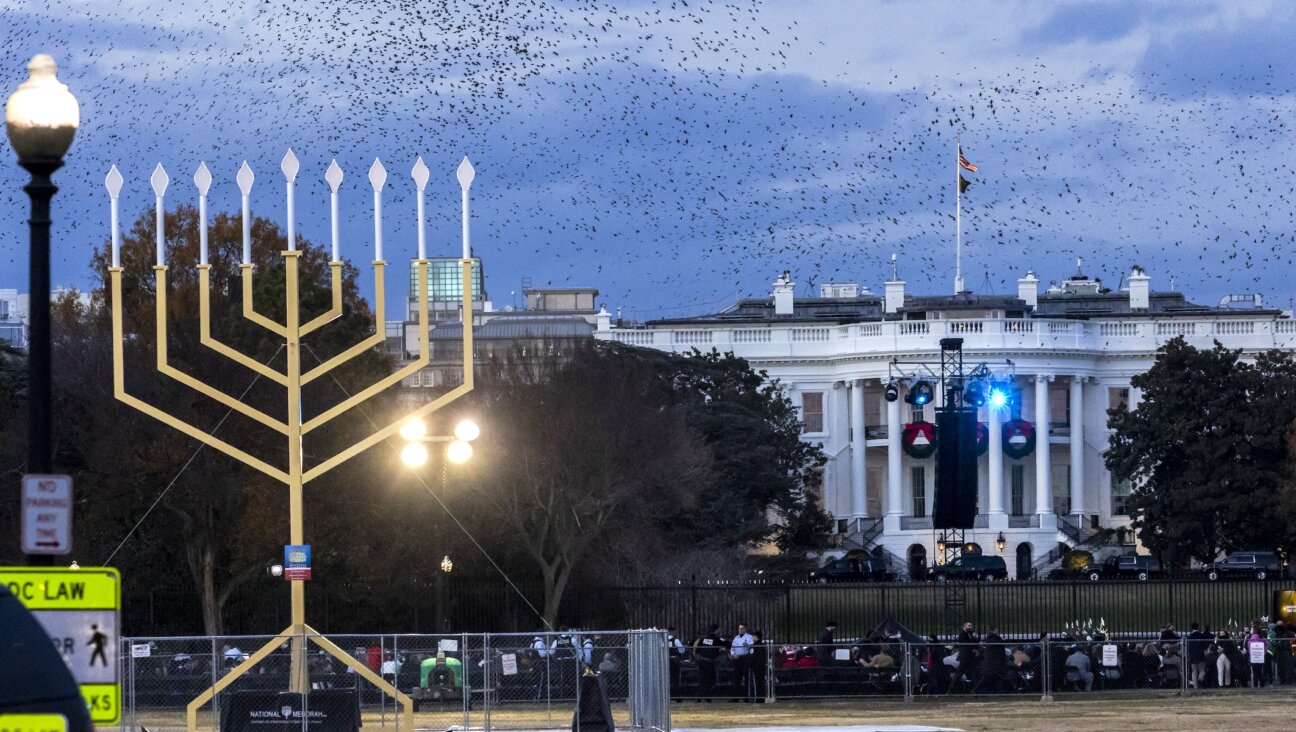
Fast Forward Washington, D.C., Jewish federation will distribute $180,000 to laid-off federal workers
-
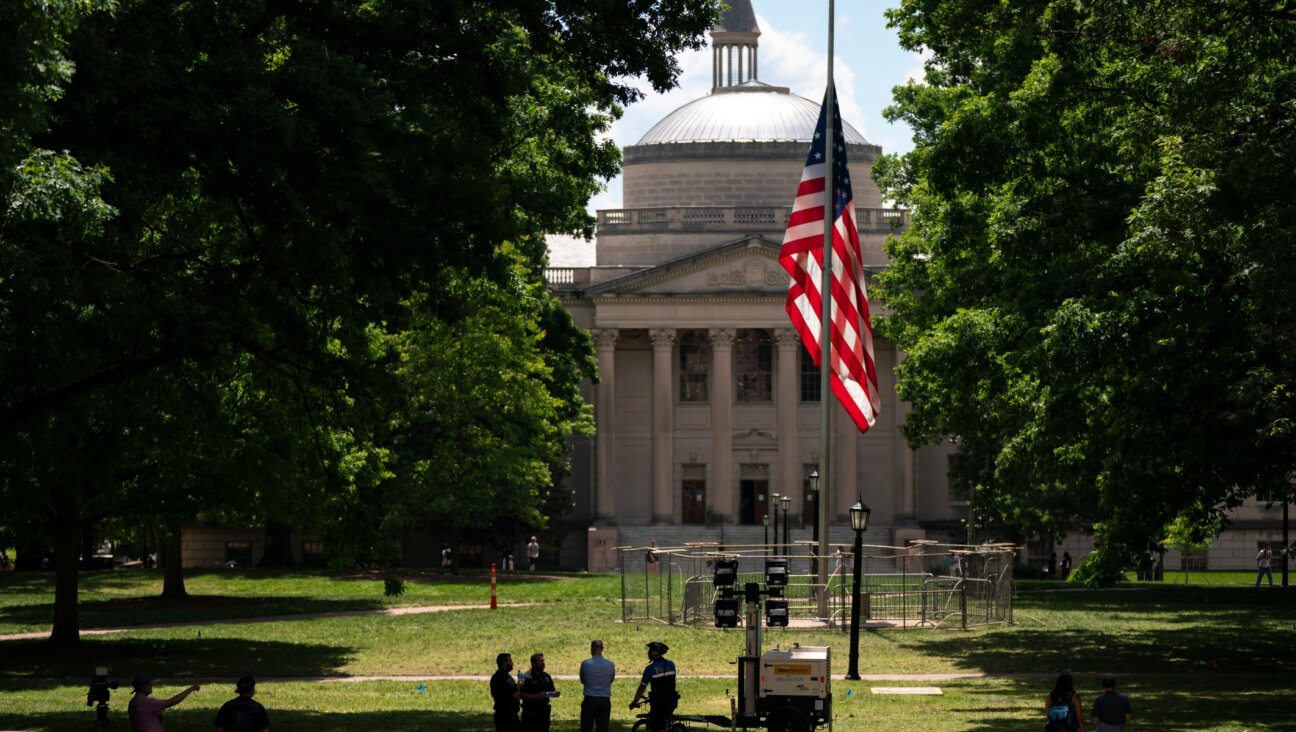
Fast Forward House approves bill requiring campuses to report more foreign funding
-
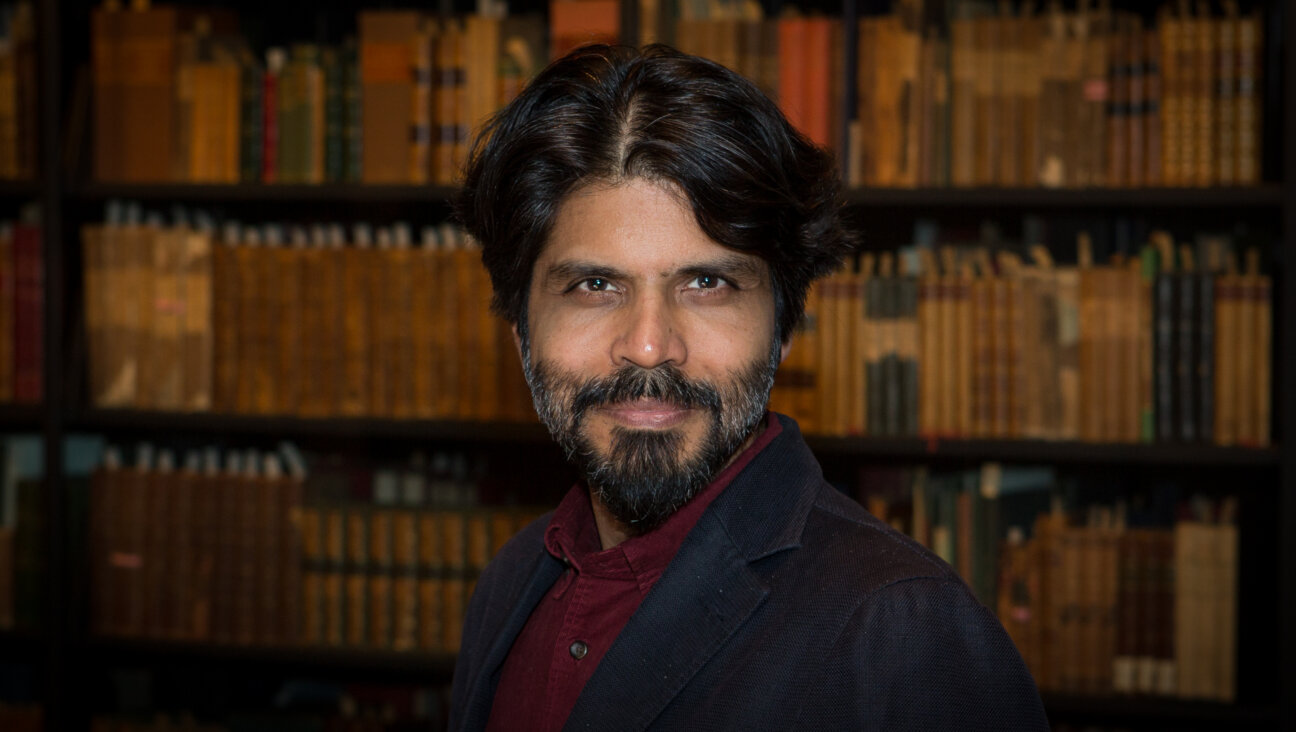
Books So much to say about Israeli violence, so little to say about violence against Jews
-
Shop the Forward Store
100% of profits support our journalism
Republish This Story
Please read before republishing
We’re happy to make this story available to republish for free, unless it originated with JTA, Haaretz or another publication (as indicated on the article) and as long as you follow our guidelines.
You must comply with the following:
- Credit the Forward
- Retain our pixel
- Preserve our canonical link in Google search
- Add a noindex tag in Google search
See our full guidelines for more information, and this guide for detail about canonical URLs.
To republish, copy the HTML by clicking on the yellow button to the right; it includes our tracking pixel, all paragraph styles and hyperlinks, the author byline and credit to the Forward. It does not include images; to avoid copyright violations, you must add them manually, following our guidelines. Please email us at [email protected], subject line “republish,” with any questions or to let us know what stories you’re picking up.









